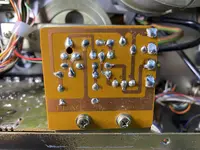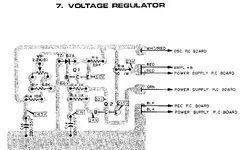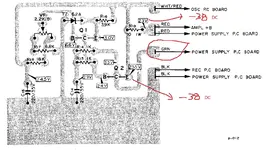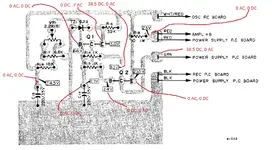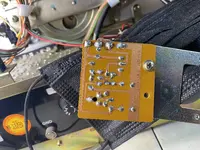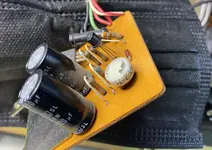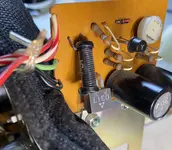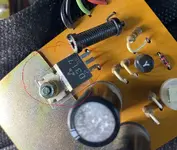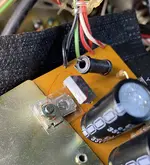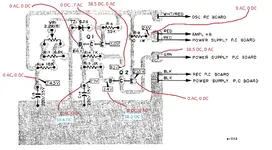Hey - thanks so much for your response. This started with me trying to get a machine going for my brother in law so he can digitize a bunch of tapes he has

On the pinch roller issue - basically it would not automatically go up to the capstan unless you pushed it up. Trying to move it felt like it was frozen. After a bunch of research I saw where the pinch roller mechanism will do this because of a small amount of old grease that has become like glue on its shaft. This is apparently common on older Teacs. After a bunch of YouTube videos on what to do, from the back, I took off the bar that holds the capstan flywheel off, then removed the capstan flywheel and associated shaft. I cleaned those thoroughly.
To get the 'lifter' I think it's called - the pinch roller mechanism off, you have to heat the shaft slightly to heat the grease and then it pulls right off. Then, I could clean it and it works perfectly.
To get to this though, I did have to take one screw out of the switches on the back of the right tension arm and loosen the other. I then rotated it slightly to the side in order to get the pinch roller mechanism off. Initially, on reassembly, the capstan motor wouldn't run. I then took those switches off and verified they worked and then upon putting them back the capstan motor worked. I had read that they were easy to break if over-tightened so I figured I must have done that. But they seem fine. I don't know why they didn't work when after it being put back together initially.
I was suspecting those 2 switches (called S2 & S3 in the schematics), but in the schematics - which is where I start to fall apart

it looks like one of the switches is for the capstan motor and the other is for the transports and both work. I could be wrong on those two switches though. But if seems they must be ok if the capstan and transports work?
I fixed a Teac 1500 that had the same capstan issue a week or so ago and gave that machine to my brother in law. I got a Teac 2300S (this one) off Craigslist knowing it had the pinch roller issue (and that I'll never see the 1500 again ha ha). I have a Teac 3440 that I've had for decades and it too had the pinch roller issue that I fixed in the last week or so while I could still remember how to do it ha ha.
This one - the 2300S - I didn't 'try' it before, but the seller had it all set up to push play when I got there and I just didn't have him do it. He pointed out the pinch roller issue. I'm pretty sure it was working before I worked on the stuck pinch roller but can't be positive. I doubt seriously he'd had it set up like that if it didn't have sound. It was absolutely totally unplugged during the work I did.
I have a service manual, but I'm way from being knowledgeable enough on those. It's like a massive failure as you said - no sound from tape or source, no vu activity at all (except lights). It just seems weird that it would go out just like that. I've looked and looked to see if something is inadvertently unhooked.
I believe there is only one fuse. There 'is' a small PCB board that sits right over the 'AC In' connection. Upon reflection

we did take one screw out of it and loosen the other and move it to the side. I don't see anything on it that looks broken, but he was moved. I'm not sure about the voltages - outside my experience level. I do have meters though.
Again, I appreciate your input.




